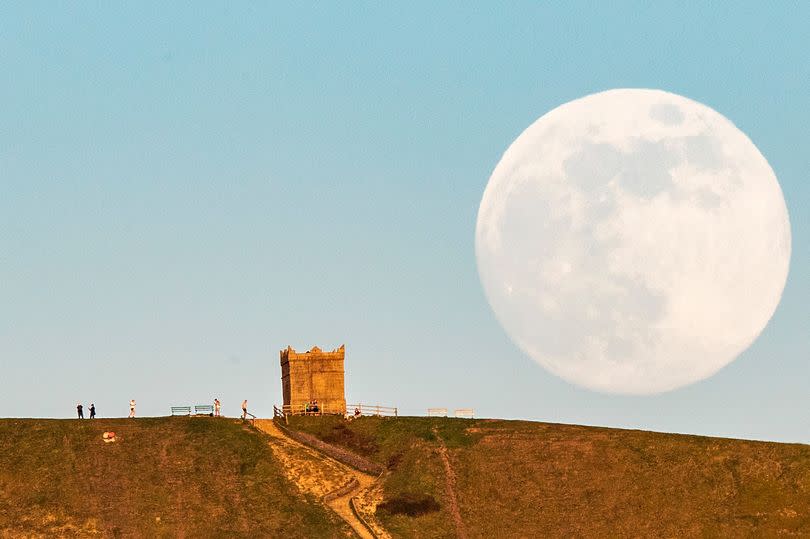Full Flower Moon 2024 set to be visible in sky today

A spectacular full moon is set to be visible in the skies on Thursday, May 23. May's full moon is known as the Flower Moon.
According to timeanddate.com, the full moon will happen at 2.53pm. While of course it will be daylight at this time of day, as the light drops later anyone with clear skies should see an impressive sight. According to NASA, the Moon will appear full for about three days, from Tuesday night to early Friday evening.
May's full moon is known as the Flower Moon in recognition of the flowers that bloom during the month. According to timeanddate.com, Native Americans called it Budding Moon, Egg Laying Moon, and Planting Moon.
Meanwhile, the Anglo-Saxon name is the Milk Moon, which comes from the Old English Rimilcemona. That translates into modern English as 'three-milkings-month', as cows were milked three times a day at this time of year.
The website added: "The Celtic and Old English names are Mothers’ Moon, Bright Moon, Hare Moon and Grass Moon. Many wildflowers bloom in May in the Northern Hemisphere, where these traditional Full Moon names originated.
"For example, many types of anemone, wild garlic, indigo, bluebells, lupine, sundrops, and violets, to name just a few. It is no wonder that the colourful displays these flowers create in nature have inspired people to call this time after them."
Gordon Johnston, writing for NASA, said: "A variety of sources list the full Moon in May as the Hare's Moon. Current western traditions see the patterns on the Moon as representing the "Man in the Moon." Many other cultures identify a hare or rabbit "in the Moon".
"There are also sculptures, images, and tales about Moon gazing hares. The Chinese zodiac tends to associate the hare or rabbit with early March to early April. The English idiom "mad as a March hare" appears to be based on the antics of the European hare during its March breeding season.
"Some scholars identify the hare as sacred to the West Germanic spring goddess Ä’ostre, a name tied to our word for Easter and the Anglo-Saxon name for April, and this connection may be the origin of the Easter Bunny. These associations suggest to me that the Hare's Moon might have been closer to Easter and the start of spring, rather than always being the full Moon in May."
He added: "This full Moon corresponds to Vesak, also known as Buddha Jayanti or Buddha Purnima, a holiday (according to Wikipedia) "traditionally observed by Buddhists in South Asia and Southeast Asia, as well as Tibet and Mongolia. Sometimes informally called "Buddha's Birthday", it actually commemorates the birth, enlightenment (nirvana), and death (Parinirvana) of Gautama Buddha. The actual date varies depending upon the calendar in use in the particular country or region, but for most it falls on or near this full Moon.
"Many lunar and lunisolar calendars start the months on or just after the new Moon, which means the full Moon is near the middle of the month. This full Moon is near the middle of the fourth month of the Chinese year of the Dragon.
"In the Hebrew calendar this full Moon is near the middle of Iyar. The 14 of Iyar (generally just before the full Moon) is Pesach Sheni (Second Passover) for those unavoidably prevented from offering the Korban Pesach a month earlier on Passover. This full Moon is near the middle of Dhu al-Qadah, the eleventh month of the Islamic year. Dhu al-Qadah is also called "Master of Truces" and is one of the four sacred months in Islam during which warfare is prohibited (except in self-defence).
"As usual, the wearing of suitably celebratory celestial attire is encouraged in honour of the full Moon. Be sure to take time to stop and appreciate the flowers and other pleasures of springtime and avoid starting any wars."

 Yahoo News
Yahoo News 
